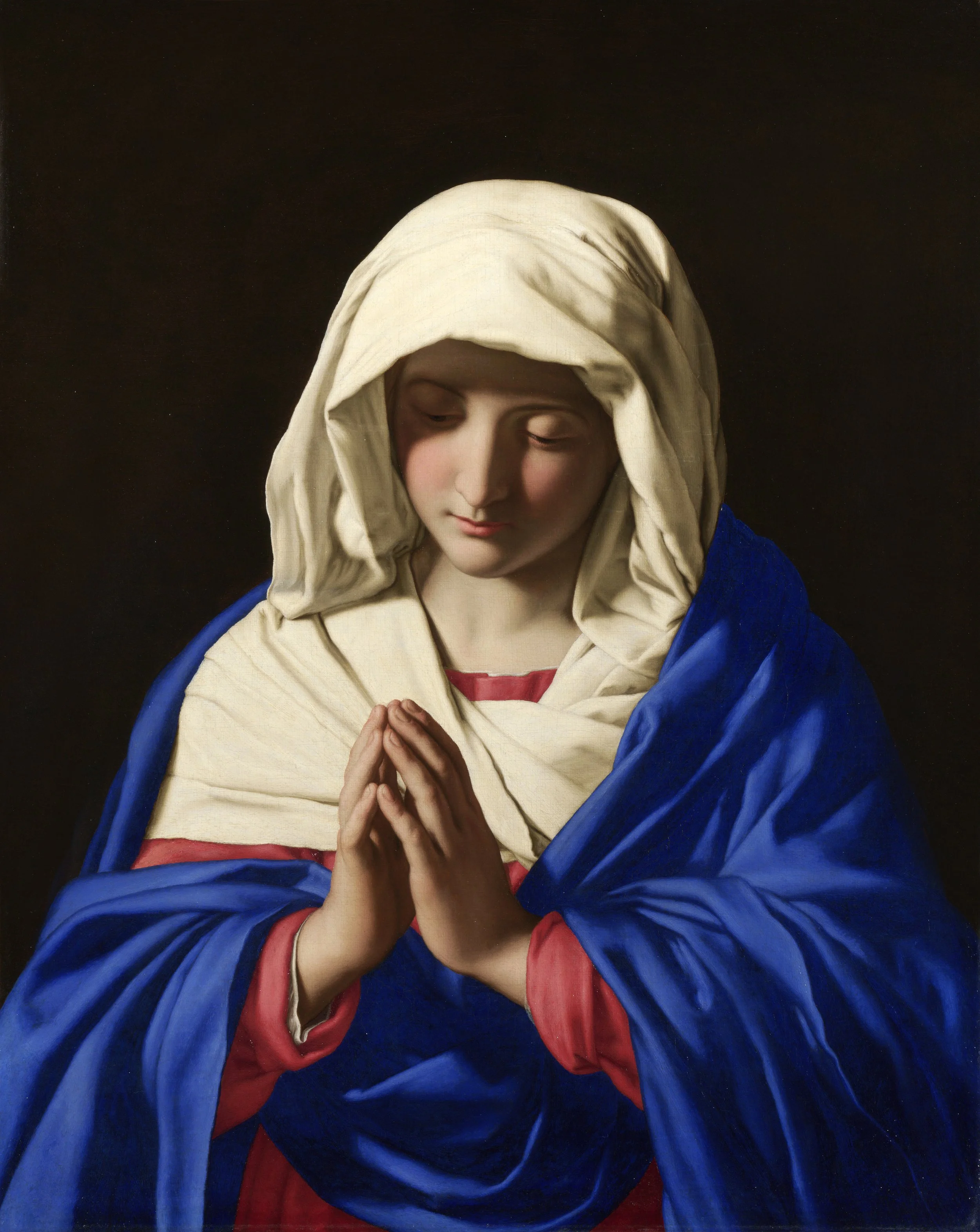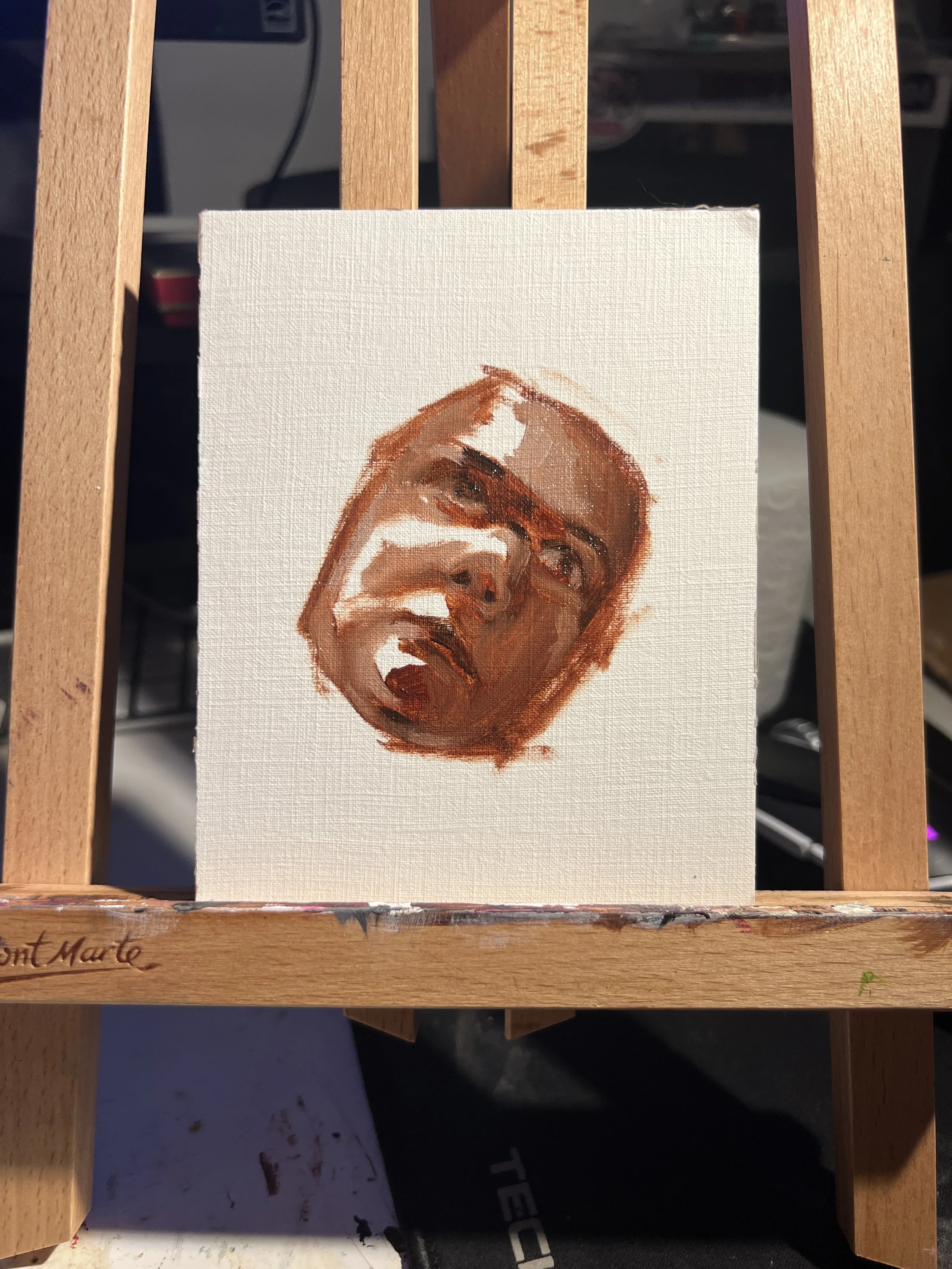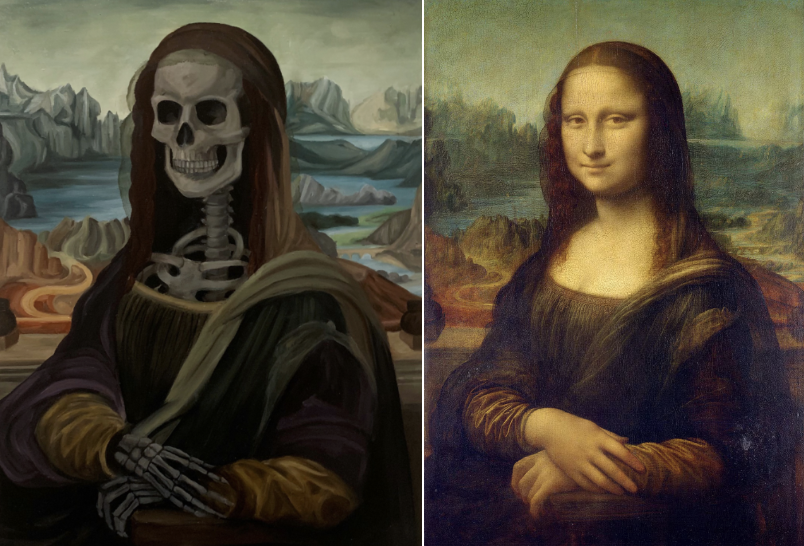Behind the Painting: The Execution of Lady Jane Grey
The "Execution of Lady Jane Grey" is a seminal work by French painter Paul Delaroche, completed in 1833. This painting is renowned for its poignant representation of the moments preceding the execution of Lady Jane Grey, a figure whose brief reign and tragic demise have cemented her place in English history. Delaroche's work is characterized by its emotional depth, historical accuracy, and intricate detail, elements that combine to offer a compelling narrative beyond its visual appeal. This analysis aims to dissect the painting's composition, explore the artist's motivations and historical context, delve into its symbolism, and conclude with its lasting impact on art and historical interpretation.
How to Write an Artist’s CV
Recently, I was made aware of the existence of artist CVs, a concept distinctly separate from the typical curriculum vitae. This alluded me, likely because my own career aspirations are directed towards art restoration and conservation, rather than the path of a practicing artist so I have not found a need for an Artist’s CV in the past. Despite this divergence in professional interests, the notion of an artist CV piqued my curiosity, prompting a deep dive into its structure, purpose, and significance. This exploration, born out of personal intrigue, has yielded insights that I believe could be beneficial to others who might be unfamiliar with this specialized professional document. Hence, I wish to share my findings on the topic, highlighting the distinctions between an artist CV and a conventional CV, and underscoring its critical role within the art community.
Intersecting Worlds: The Synergistic Dynamics of Art, Science, and Research
The exploration of the relationship between art and science necessitates a clear understanding of both domains. Art encompasses a wide range of human activities in creating visual, auditory, or performed artifacts, expressing the author's imaginative, conceptual ideas, or technical skill, intended to be appreciated primarily for their beauty or emotional power. Science, in contrast, is the systematic study of the structure and behavior of the physical and natural world through observation and experiment. At the intersection of art and science lies a rich field of inquiry where creativity meets rigor, and intuition intersects with empirical investigation.
Ultramarine: Beyond the Blue
The journey of ultramarine from the remote lapis lazuli mines of Afghanistan to the esteemed canvases of the Renaissance and beyond is a fascinating narrative of art, science, and commerce. Ultramarine, renowned for its deep and captivating blue, has not only been a symbol of wealth and divine beauty but also a subject of relentless scientific inquiry leading to the creation of its synthetic counterpart. This exploration delves into the multifaceted history of ultramarine, examining its nomenclature, sourcing, the challenges and triumphs of its integration into artists' palettes, and its depiction in iconic artworks. Further, it contrasts the nuanced differences in colour between the authentic pigment derived from natural lapis lazuli and its synthetic version, underscoring the advancements in chemical synthesis that have democratized access to this once-exclusive color. The narrative of ultramarine is not merely about a pigment but encapsulates a broader discourse on the intersection of natural resources, artistic endeavor, and technological innovation.
Navigating Artist's Block Amid Stress: A Personal Reflection on Reimagining Failed Artworks
In the coming three weeks, I anticipate an unprecedented level of stress, a predicament many find themselves in due to various life circumstances. It's within this context that artist's block has emerged as a significant side effect, complicating my creative process further. This reflection delves into the challenges posed by a large-scale painting project that fell short of expectations, and how I've approached the issue of artist's block, especially under the looming shadow of stress.
Behind the Painting: Le Déjeuner sur l'herbe
The painting "Le Déjeuner sur l'herbe" (The Luncheon on the Grass) by Édouard Manet, created in 1863, stands as a pivotal work in the history of Western art, marking a significant departure from traditional representations and precipitating the transition from Realism to Impressionism. This piece not only ignited controversy for its audacious depiction of contemporary life but also challenged the artistic and moral conventions of its time. Through a critical examination of its composition, the juxtaposition of clothed males and a nude female figure, and its subsequent rejection and exhibition at the Salon des Refusés, this analysis aims to unpack the complexities of Manet's masterpiece. Furthermore, by delving into Manet's background, the socio-political climate of 19th-century France, and the painting's reception and legacy, we seek to understand the enduring significance of "Le Déjeuner sur l'herbe" in the broader context of art history and societal change. This article proposes to explore how Manet's innovative approach not only reflects his artistic philosophy but also encapsulates the evolving cultural landscape of his era, thereby cementing the painting's status as a landmark in the transition towards modern artistic expression.
A Personal Journey Amidst Academic, Artistic, and Athletic Aspirations
Today's article deviates slightly from our usual content, serving as a more personal update on my life's current endeavors. I believe it's essential to share these milestones with you, as they significantly shape the content and inspiration behind our regular discussions. I extend my apologies to those expecting our standard fare and appreciate your understanding as I navigate through this pivotal phase of my life. We will resume our regular content next week.
Lead White: A Historical and Chemical Overview
Lead white, known chemically as basic lead carbonate (2PbCO3·Pb(OH)2), has been an integral pigment in the palette of artists for centuries, revered for its exceptional qualities in painting. Despite its widespread use and significance in the art world, lead white has also been a source of health concerns due to its toxic properties. This article delves into the multifaceted aspects of lead white, examining its historical background, chemical characteristics, production methods, and the implications of its toxicity. It further explores the decline in the use of lead white, driven by health and environmental considerations, and discusses its continued relevance in art conservation and historical studies.
Critical Review of Iconoclasm and Its Impact on Art History: From Historical Instances to Contemporary Protests
Iconoclasm, the deliberate destruction of symbols or artworks for religious, political, or ideological reasons, has played a significant role in shaping art history. This phenomenon has occurred across various cultures and eras, from the Byzantine Empire's iconoclastic controversies to the Reformation in Europe. In contemporary times, similar acts are often seen in the defacing of art during protests to garner media attention. This article examines the phenomenon of iconoclasm, its historical instances, and its impact on art history, drawing parallels with the recent trend of using art defacement as a tool for protest.
Behind the Painting: Caravaggio’s Narcissus
This article presents an in-depth analysis of Caravaggio's "Narcissus," a masterpiece of Baroque painting. The study involves an exploration of the work's historical background, provenance, the artist's biography, the mythological subject matter, and the symbolism inherent in the painting. By employing a critical approach, this analysis aims to elucidate the nuances and significance of "Narcissus" within the broader context of art history.
How To Identify Art Movements
Being completely honest - I wrote this article to serve as a comprehensive revision guide for my upcoming postgraduate interviews. While my initial motivation was somewhat self-centered, there is an acknowledgment that the information compiled here might prove beneficial to others as well. With that in mind, let's transition to a more practical exploration of how to discern and identify different art movements across the expanse of western history.
The Significance of Self-Portraiture
Self-portraiture, a practice embedded in the annals of art history, has consistently played a practical and multifaceted role in the artistic landscape. Beyond its apparent function as a means of personal documentation, self-portraiture has emerged as a dynamic tool for skill development, contributing significantly to the evolution of artists' capabilities. This article delves into the enduring significance of self-portraiture, delving into the intricate layers that underscore its historical prominence and contemporary relevance.
From the early self-portraits of renowned masters to the contemporary expressions of selfhood, artists have wielded self-portraiture as more than just a reflection of their physical appearance. It has been a mirror reflecting the evolving styles, techniques, and even the psychological depths of creators. This article seeks to unravel the underlying threads that weave through the fabric of self-portraiture, with a particular emphasis on the challenges inherent in accurately depicting one's own likeness.
Embracing Simplicity: Exploring Minimalism in Art
In the relentless pursuit of abundance, the world found itself ensnared in the clutches of excess. Minimalism, born out of a collective acknowledgment that the relentless quest for more led to a stifling oppression, emerged as the antidote to this pervasive inundation. It began as a whisper within the realms of art, a deliberate departure from the extravagant and the superfluous, echoing a yearning for simplicity and essentiality.
This movement, which initially unfolded on the canvases of artists seeking clarity amid chaos, swiftly transcended its artistic origins to permeate every facet of our lives. It became a rallying cry across diverse sectors, as each recognized the need to liberate itself from the burdens of superfluousness. From consumer habits to architectural design, minimalism evolved from a niche aesthetic inclination to a profound lifestyle choice.
Personally, I find myself captivated by the allure of minimalism – a complex simplicity that extends its relevance far beyond the confines of art. It is not merely a visual aesthetic but a philosophy that offers a sense of control and order. As the world grapples with the repercussions of its insatiable appetite for more, this article seeks to unravel the roots and principles of minimalism.
2023: A Year in Review
As the year concludes, I pause to reflect on my artistic journey over the past twelve months. This article functions as a pragmatic review, providing a month-by-month breakdown of the pieces I've crafted throughout the year. It delves into the highs and lows encountered in the creative process, providing a candid look at the development of my artistry across the seasons. Additionally, it offers insight into the practical challenges of managing a creative workload, exploring the balance between ambition and feasibility.
The Symbolism of Colours in Christmas Art
The festive season is awash with vibrant colours that adorn our homes, streets, and, of course, our artwork. Christmas art, with its rich history and diverse cultural influences, has given rise to a palette of colors that carry deep symbolic meanings. In this exploration, we will delve into the historical and cultural significance of red, green, gold, and other colours associated with Christmas, examining how artists have harnessed these pigments to convey profound meanings.
Open Bracket Exhibition
As an art student, having your work displayed in a public exhibition can be an incredibly exciting, nerve-wracking, and rewarding experience. It’s a chance to unveil your creative passions to the world and get a taste of what it’s like to be a professional artist. But what viewers don’t always realize when they walk into that sleek, polished gallery space is the tremendous amount of collaboration, planning, and hard work happening behind the scenes to make it all come together.
Liquin - An Oil Painter’s Best Friend
Oil painters have used mediums for centuries to modify the properties of their oil paints. One of the most popular and versatile mediums used today is liquin, an alkyd-based medium. In this post, we’ll explore the history of liquin, its many uses and advantages for oil painting, any potential disadvantages, and important safety considerations when using this medium.
Tyrian Purple: The Royal Pigment
For over a millennium, tyrian purple stood as the most coveted pigment in the ancient world. Derived from a laborious harvesting process involving thousands of predatory sea snails, the vibrant crimson-purple hue was reserved almost exclusively for denoting imperial sovereignty across the Greek, Roman, and Byzantine empires. Though the specifics of its production may have faded over time, tyrian purple's legacy as a luxury symbol of status persists even today.
The Myth of Originality
What does it mean for art to be truly original? In a hyperconnected world filled with references and reproductions, can any new creation stand alone as purely inventive? While the romantic ideal of the genius artist conjuring novel forms fully formed persists, the realities shaping artistic innovation prove far more complex. Upon analysis, every artwork contains traces of precedent inspiration, whether consciously integrated or subconsciously inherited. Examining the cumulative cultural and perceptual forces underpinning the artistic process reveals creativity's fundamentally collaborative essence. Art does not emerge within a vacuum. By embracing this more nuanced understanding of originality’s mythos, artists and audiences alike can evolve Their approach towards valuation and criticism.
Behind the Painting: La Fiancée Hésitante
Auguste Toulmouche’s “La Fiancée Hésitante”, also known as “The Hesitant Fiancée” and “The reluctant Fiancée”, a masterpiece of 19th-century French art, invites viewers into a world of refine beauty and romantic ambivalence. Painted in 1875, this captivating work captures a moment of hesitation and contemplationg within the context of a matrimonial setting. this painting has also become a recent hit trend on TikTok, where viewers are using it to express their own anger and vindication at various circumstances. In the last week alone I have come across over 20 posts depicting this painting. let’s delve into the intricacies of Toulmouche’s artistry, unraveling the symbolism, exploring the artist’s background, and unveiling the timeless elegance that defines “La Fiancée Hésitante”.




















